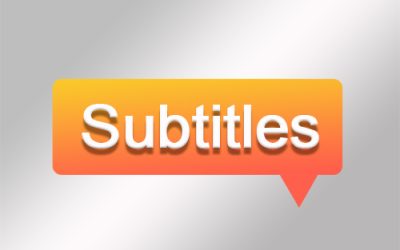E-learning has taken the world by storm and elevated the learning experience to a new level. Over the past two years, the COVID-19 pandemic changed education dramatically with the shift from physical to virtual classrooms. According to a Forbes article, in 2020, there were over 6 million students around the world pursuing higher education through online courses, and that number is set to keep rising. Mobile platforms have increased access to online learning for more people. Video is best way to provide interesting and engaging e-learning content and video transcription service providers can ensure effective conversion of the media content to make it accessible to a wider audience. A recent market research report from Technavio predicts that the global e-learning market is set to experience high growth.
Global e-learning Market Analysis – Growth Prospects and Key Drivers
According to Technavio, the global e-learning market is expected to grow by $ 1.72 trillion during 2022-2026, expanding at a CAGR of 16.35% during the forecast period. The research is based on an analysis of around 25 vendors and explores market size, trends, growth drivers, and challenges. Like other Technavio market research reports, this report provides a complete picture of the competitive landscape and uses an in-depth vendor selection methodology and analysis using qualitative and quantitative research to forecast market growth accurately. The report provides a detailed view of the market by analyzing primary and secondary data from multiple sources based on an analysis of profit, pricing, competition, promotions, industry influencers, and other key parameters.
The e-learning market analysis covers the end-user segment and geographic landscape. The end-user segments are: Higher education, Corporate, and K-12. The geographical areas covered are: APAC, MEA, North America, South America, and Europe.
The report identifies the key drivers of the e-learning market as:
- Learning process enhancements and evolution of technologies in the academic sector
- Increase in the number of internet users
- Move from traditional classrooms to digital classrooms
- Increasing investments in hardware and software solutions by educational institutions
- Cost-effective content development
- Rising student engagement in classrooms through gamification
- Increase in adoption of microlearning
- Increase in cloud computing solutions for the academic sector
- The rise of industry 4.0 – Internet of Things (IoT), cloud computing and analytics, and AI and machine learning, which have revolutionized communication practices and aspects of education
Asynchronous and Synchronous E-learning
E-learning falls into two categories: asynchronous and synchronous. Asynchronous learning offers great flexibility as it allows students to learn from a distance on their own schedule, within a given timeframe. They can access and complete lectures, readings, homework and other learning materials and communicate with teachers or peers at any time via media such as e-mail and discussion boards. In fact, asynchronous online courses are popular as they allow learners to combine study with other commitments such as work, family.
Synchronous learning means learning from a distance, and attending classes at the same time as the instructor and other participants. Synchronous e-learning uses videoconferencing and chat. Learners and teachers can interact real-time and ask questions and get answers.
Asynchronous and synchronous use different methods but rather than trying to identify which medium is better, experts say that the e-learning community needs an understanding of when, why, and how to use different types of e-learning (https://er.educause.edu). Also, it has been found that both methods can be blended to enhance the e-learning experience.
Impact of E-learning Market Trends on the Transcription Industry
With video, online courses, mobile devices, and digital textbooks, the e-learning industry is growing at a fast pace. eCourses, webinars, and virtual conferences enhance the e-learning experience. E-learning is also quick cost-effective in that it does not involve long training periods, and reduces infrastructure, stationery, travel expenses.
However, one question is whether students will recall the content presented in video sessions. They can, of course, go back and listen to the recordings of the online sessions, but this can be time-consuming and tedious. Media transcription services can provide the solution. Posting transcripts along with the video content will ensure that the content is available for review at any time. This can improve the virtual learning experience.
E-learning video transcription can be easily done using speech recognition technology (SRT), but poor recording quality, background noise, multiple speakers, and unfamiliar accents can compromise accuracy. For flawless transcripts, consider getting the SRT-generated transcripts reviewed by an online transcription company. Experts can help enhance the e-learning by including comments and annotations, and timestamps.




